Kiyomizudera Temple: Features, History, and Best Time to Visit

Kyoto's Kiyomizudera Temple is a historic place you don't want to miss. We feature the highlights of this World Heritage Site along with tips for those visiting during the cherry blossom and fall foliage season.
Kiyomizudera Temple: A Must-Visit Place in Kyoto
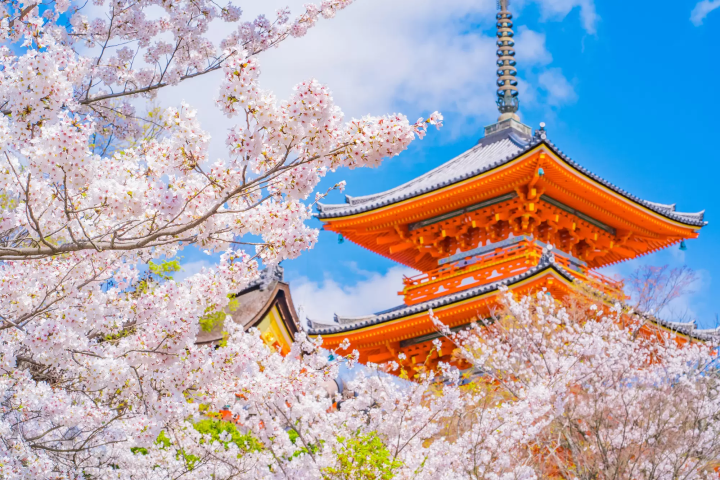
Photo by Pixta
Kyoto is home to various shrines and temples. Along with Tokyo, it's one of Japan's major travel destinations. Kyoto City is full of history and tradition starting with historic spots such as Fushimi Inari Shrine and Kinkakuji Temple. It also has old-fashioned shops and artisan studios, as well as Japanese restaurants with excellent cuisine.
Among the many popular places to see, Kiyomizudera Temple is visited by almost everyone when sightseeing in Kyoto.
We introduce the highlights of Kiyomizudera Temple along with information on cherry blossom and fall foliage light-ups.
Table of Contents:
1. Kiyomizudera Temple: Brief History and General Features
2. Kiyomizudera Temple: Points of Interest
3. Required Visiting Time and Busy Times of the Year
4. Admission Fees, Business Hours, and Location
5. Cherry Blossom, Autumn Foliage, and Illumination Highlights
6. Places to Visit Near Kiyomizudera Temple
7. Hotels Near Kiyomizudera Temple
Kiyomizudera Temple: Brief History and General Features
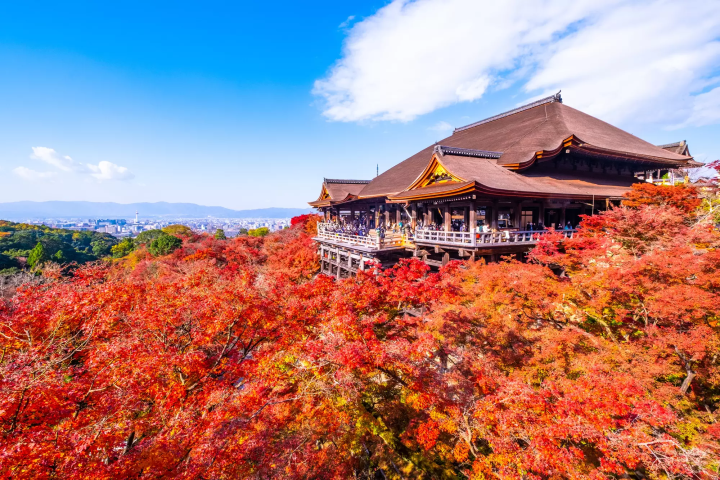
Photo by Pixta
Kiyomizudera Temple is one of Japan's main temples and has been designated a national treasure as well as a World Heritage Site.
This temple was founded about 1,200 years ago on Mt. Otowa by a Hosso monk belonging to the Mahayana Buddhist sect. The temple got its name from the spring water that gushes out from Otowa Falls. Kiyorakana (pure) mizu (water) dera (temple) became the name of the temple.
Famous for the beauty of its cherry blossoms and autumn foliage, Kiyomizudera is a place where visitors can enjoy Japan's beautiful natural surroundings. Many people come from around the world to see the evening illuminations held during the spring, summer, and fall seasons.
Kiyomizudera Temple: Points of Interest
Next we'll introduce the temple's main points of interest by dividing them into three distinct areas: the main building (hondo), Jishu Shrine, and Otowa Falls.
You can organize your sightseeing plan efficiently according to what you'd like to see and how much time you want to allocate to each place.
1. Highlights of the Main Temple Building (Hondo) Area
First, we'll feature the highlights of the main temple building (hondo) area, which starts at the temple's entrance and extends as far as the main building.
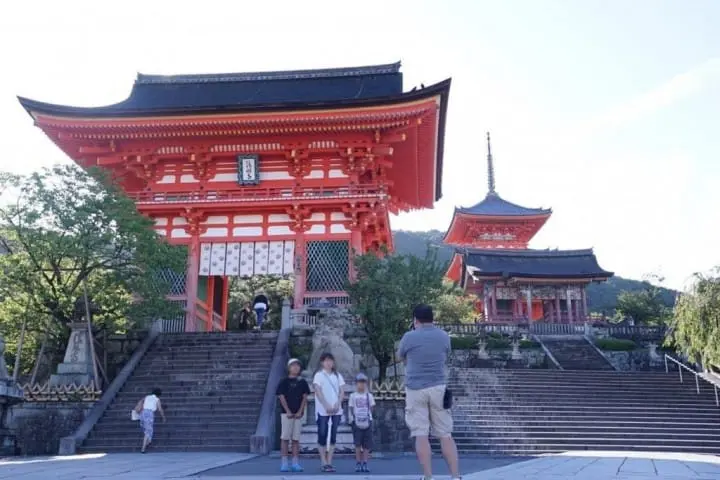
In this area, we'd like you to focus on the following three highlights.
The first highlight is Nio-mon Gate, a large red gate at the temple's entrance, and also Sanju-no-to, a three-storied pagoda towering in the background (see photo above).
These structures were also designated as Important Cultural Properties. To act as a talisman and express divinity, they were colored red using a traditional painting method.
This scenic view unique to Kyoto makes this spot perfect for taking wonderful photos.
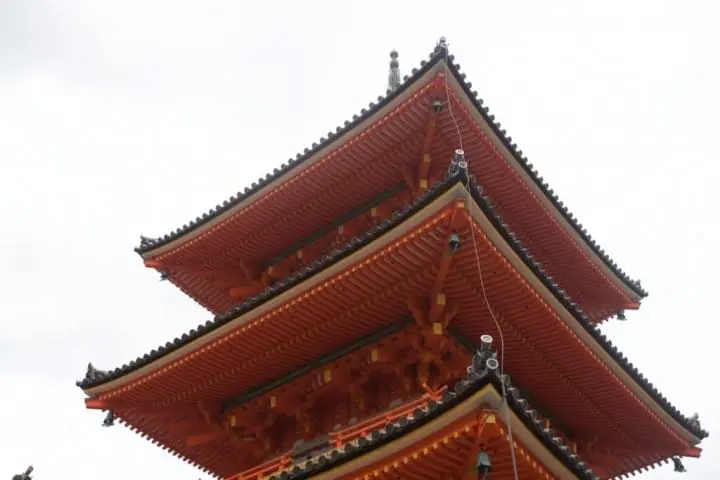
The photo above shows the view of the pagoda as seen from below. When you stand directly below, you feel a sense of power and grandeur that's different than from viewing it from afar.
When you pass by the pagoda and take the stairs you'll reach the ticket office. From here, let's continue on to the main building (hondo), the heart of Kiyomizudera Temple.
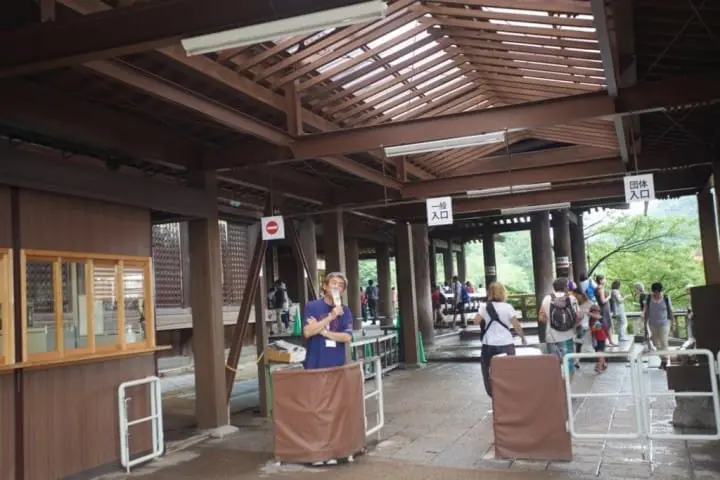
Show your ticket to the attendant, then pass through the gate and enter.
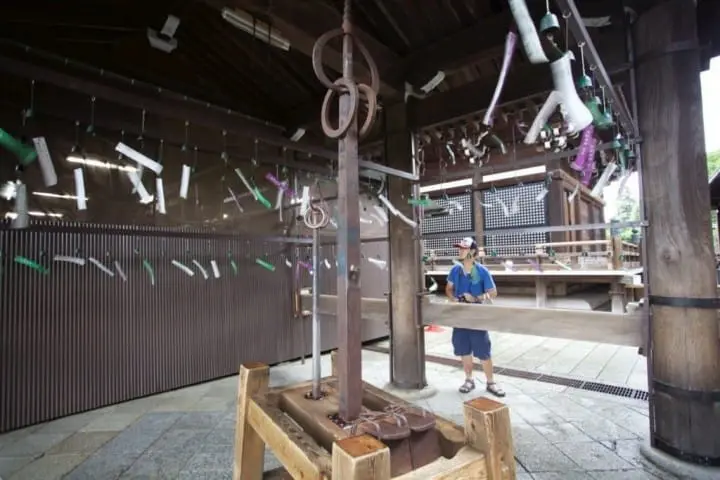
After passing through the gate, you'll see a rusted metal pole. This is called tetsushakujo and was gifted to the temple by ascetics known as shugenja (*1). This staff weighs 90 kilograms and is difficult for one person to lift. However, it's said that those who are able to lift it up will be blessed with good luck.
Placed in front of the staff is a pair of takageta, or traditional footwear. Being able to walk in these successfully is also said to bring good fortune.
*1 Shugenja: a religious follower who undergoes Buddhist training while living in the mountains.
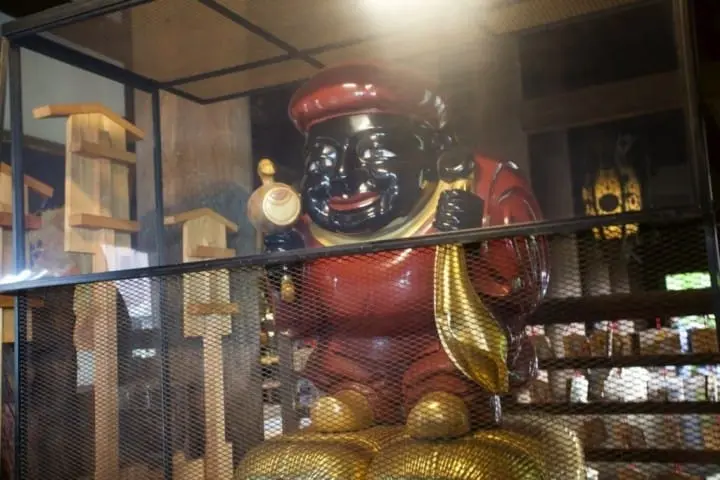
This area's second highlight is the Statue of Daikokuten with its humorous expression, and Fureai Kannon.
Dressed in red clothing, Daikokuten has a funny expression, but is actually a revered deity. This god is said to bring luck with financial and business matters so please pay a visit. You can also purchase an omamori good luck charm of Daikokuten.
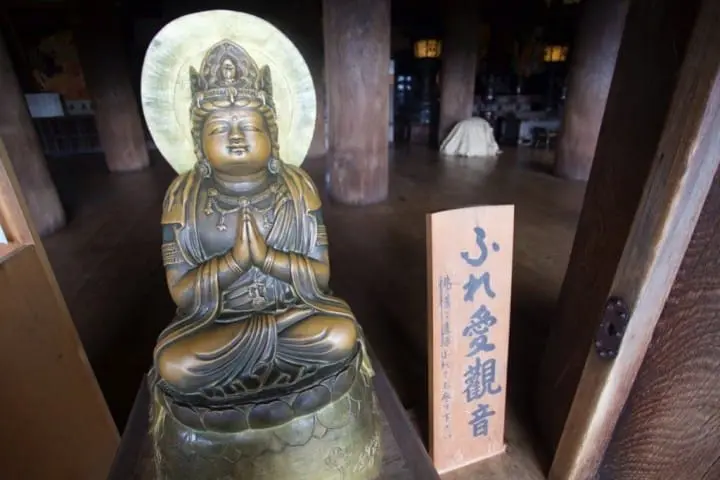
Right next to Daikokuten is Fureai Kannon.
Kannon is a Bodhisattva who is worshiped throughout Japan and is also the main deity at Kiyomizudera Temple. Touching a temple's main deity is not usually permitted but in this case, visitors are allowed to directly touch Fureai Kannon.
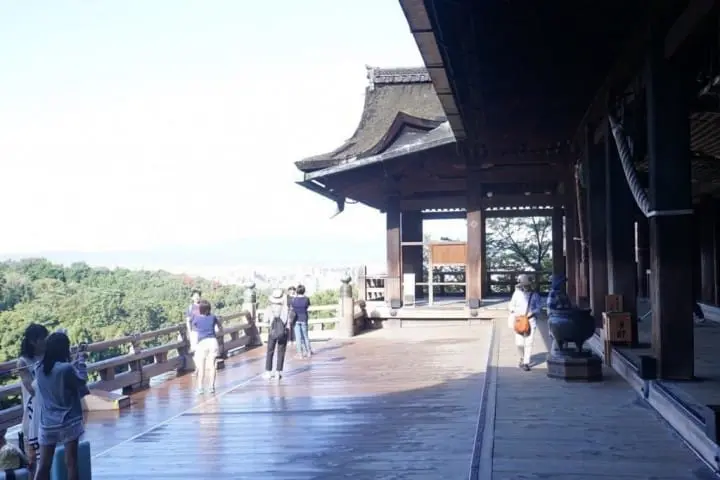
This area's third highlight, the Kiyomizu Stage, can be found right in front of the main building. This is called the heart of Kiyomizudera Temple.
This stage has been used for rituals and performances since one thousand years ago. It is characterized by the fact that it was built entirely without the use of nails and stands the same height as a four-story building.
At the time, a structure of this height was considered unusual, and the view from here was thought to be thrilling. Even today, "Jump off from the stage at Kiyomizu," is a well-known Japanese expression that means to act boldly and take decisive action.
2. Highlights of the Jishu Shrine Area
Our next main highlight is Jishu Shrine (*2).
*2 Jishu Shrine: Due to restoration work on the main building the shrine will be closed for about three years starting on August 19, 2022. For the latest updates please check the shrine's official homepage.
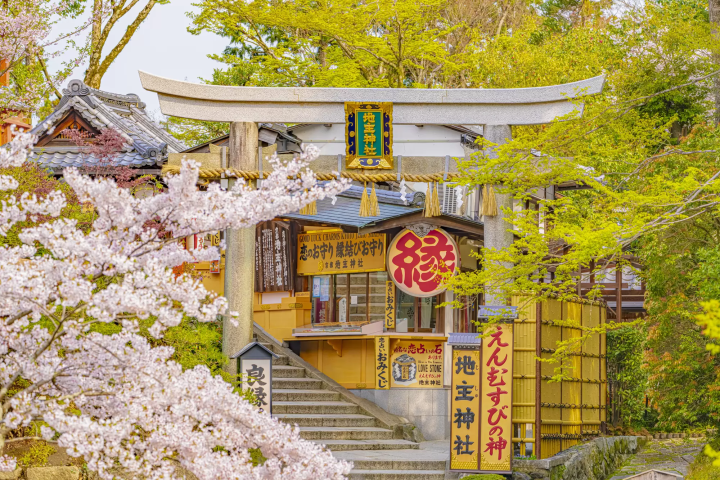
Photo by Pixta
First, we leave the main building area and climb the stairs to the left. Located at the top of the stairs is famous Jishu Shrine, known for bringing good luck in matchmaking.
The entire Jishu Shrine precincts have been designated an Important Cultural Property and a World Heritage Site. For this reason, all of the buildings here can be considered highlights, starting with the main building (honden) decorated with gold leaf.
For more details please also take a look at this following MATCHA article!
3. Highlights of the Otowa Waterfall Area
Finally we introduce the third main highlight, the Otowa Falls area.
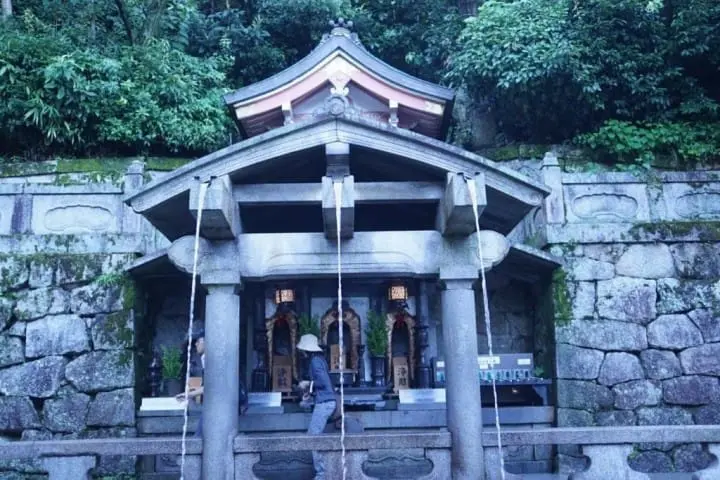
The highlight of this area is Otowa Falls, whose pure waters are also the origin of Kiyomizudera Temple's name.
Mt. Otowa's spring water emerges from three separate spouts (see photo above). Facing the front, the water pouring out from the right-hand side is said to grant longevity, success in love, and academic success.
When visiting here, scoop out water coming from just one location. Take a sip of the water to purify your body, then make a wish. It's been said that if you scoop out water from two or three different locations, your luck will be cut in half and not a single wish will be granted.
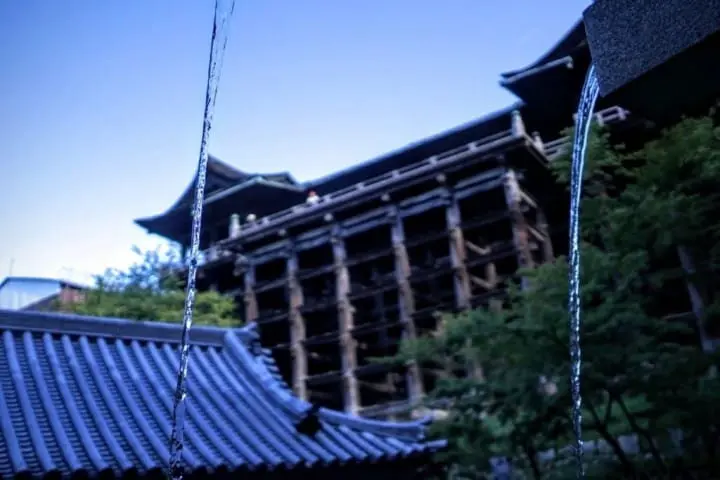
This is the view of Kiyomizudera Temple as seen from behind Otowa Falls.
Required Visiting Time and Busy Times of the Year
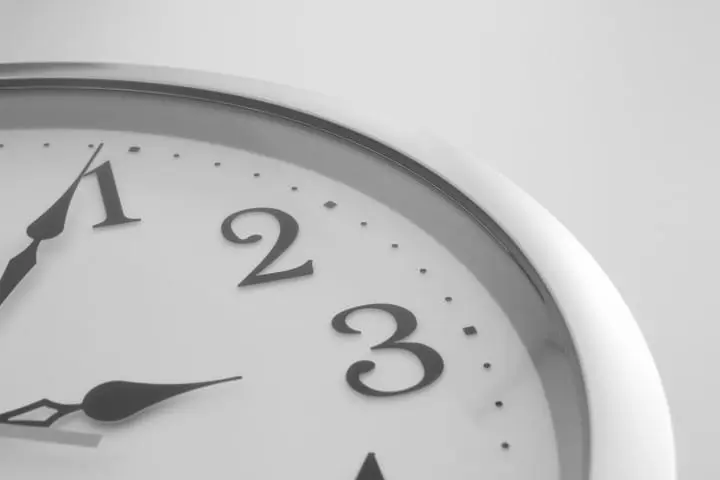
It takes about one hour to visit Kiyomizudera Temple.
A quick tour takes about 30 minutes, and if you want to take your time and thoroughly explore the precincts you should plan for about two hours.
However, please note that during the busy seasons listed below, purchasing your ticket and gaining entry can take as long as one hour. So when visiting during these popular times of the year we recommend allowing yourself plenty of time.
▼Particularly Busy Times of the Year
The first three days of the New Year
January 1-3
Cherry Blossom Season
The end of March to early April
Golden Week
Typically the last week in April to the first week in May
Autumn Leaves Season
The end of November to early December
Visitors in wheelchairs are also invited to visit the precincts of Kiyomizudera Temple. But please exercise caution because there are slopes and gravel roads. Please refer to the homepage's wheelchair access map for more details.
Temple Admission Fees, Business Hours, and Location
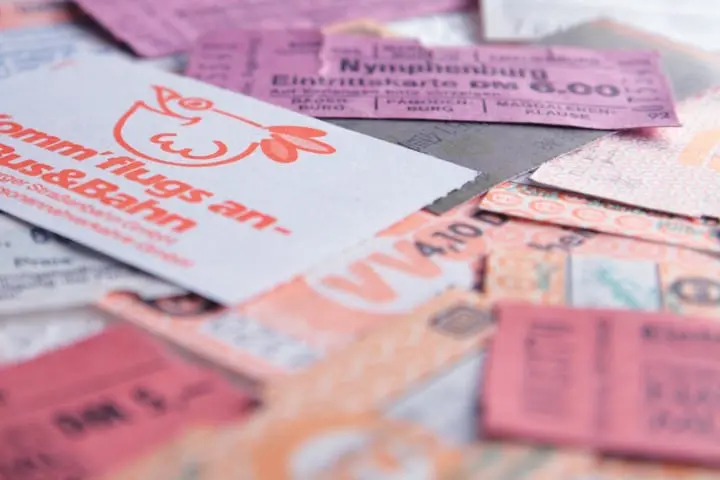
Admission to the temple is 400 yen for adults and 200 yen for Junior High School students and under.
Same-day tickets are only available at the entrance on the day of admission. At the present time (March 20, 2023), advance tickets are not available online.
For details on the location, hours of operation, and access information please see below.
Location: Kyoto, Higashiyama, Kiyomizu 1-294
Business Hours: 6:00-18:00
Access: It's a 25-minute walk from Kiyomizu-gojo Station (Keihan Electric Railway). Or at Kyoto Station you can take a #206 Bus headed for the Kitaoji Bus Terminal or a #100 Bus headed for Kiyomizudera-Gion-Kinkakuji. Then get off at Gojozaka bus stop and walk for 10 minutes.
Cherry Blossom, Autumn Foliage, and Illumination Highlights

Photo by Pixta
Kiyomizudera Temple is also a famous cherry blossom and fall foliage viewing spot.
During the cherry blossom season, about one thousand Somei Yoshino and Yamazakura cherry trees in full bloom cover the precincts and accentuate the main building and the three-storied pagoda. Also, during autumn, about one thousand maple trees beautifully color the inside of the main building. These are illuminated at night during certain times of the year.
During the Evening Special Visit, visitors can enjoy evening illuminations held during the spring, summer, and fall. Hours of operation are extended until 21:30 (last entry is 21:00).
As of January 2024, the annual light-up schedule has not been announced yet. For the latest information please refer to the official website of Kiyomizudera Temple.
Places to Visit Near Kiyomizudera Temple
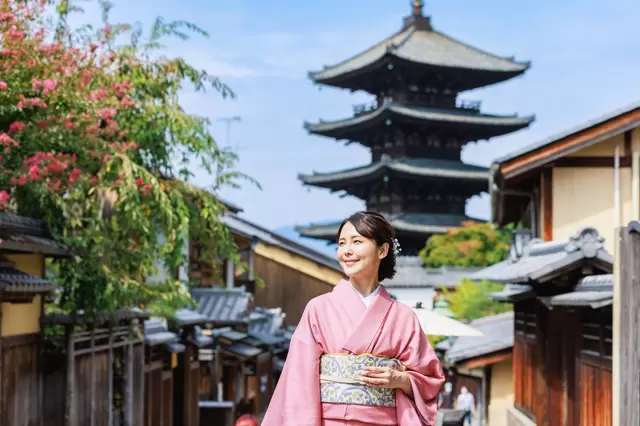
Photo by Pixta
Kiyomizudera Temple is located at the end of the sando (*4) or approach, which goes by the names of Ninenzaka and Sannenzaka. This approach is lined on both sides with various shops and eating establishments.
Situated along Ninenzaka is Starbucks Coffee Kyoto Ninenzaka Yasaka Chaya. This is the world's first Starbucks with tatami seating and is highly popular with international visitors.
On the approach to Kiyomizudera Temple where ancient Kyoto's old-fashioned townscape remains, we also recommend putting on a rental kimono and getting your picture taken as you enjoy your sightseeing!
Kimono rentals are extremely popular, but don't worry. If you use the travel experience reservation site, klook, you can make a reservation ahead of time!
*4 Sando: The approach leading to a Buddhist Temple or Shinto Shrine.
Click here for kimono rentals on klook!
Use a Wi-Fi Rental To Prepare for Your Trip and Even Avoid Trouble!
KYOTO Free Wi-Fi service is available in Kyoto Prefecture.
However, it's limited to Kiyomizudera Temple's entrance area and some nearby shops.
Kiyomizudera Temple is a facility that covers a large area and is bustling with many visitors. So it's rather easy to get separated from the people you're traveling with. But if you rent pocket Wi-Fi you can avoid problems of this nature because you'll be able to stay in constant contact with them.
With that in mind, MATCHA is currently offering international visitors a Ninja-Wifi 20% off coupon (English). For more details please refer to this matcha article, and then take advantage of this great offer!
Click here to get 20% off NINJA Wi-Fi!
We Recommend Renting a Car for Your Kansai Area Travels!
In Kyoto, home to Kiyomizudera Temple, each sightseeing spot can be slightly far apart. Typically the main method of sightseeing is by public transportation, such as by bus.
But if you rent a car, in addition to not having to worry about bus times, you can also easily enjoy other Kansai area destinations including Osaka and Kobe.
MATCHA is offering international visitors a 10% off coupon with NIPPON Rent-A-Car, one of Japan's leading car rental agencies.
When visiting Kyoto, please consider rent-a-car as a convenient way to see the Kansai area.
Click here to get 10% off on NIPPON Rent-A-Car!
Stay at a Hotel Near Kiyomizudera Temple!
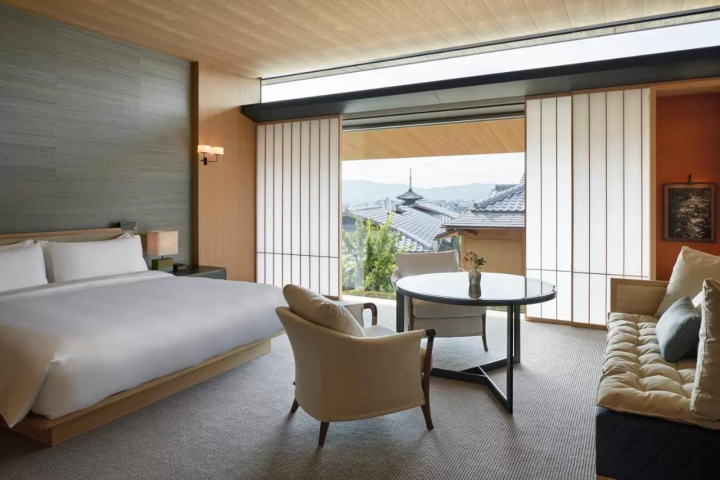
Picture courtesy of Booking.com
In Kyoto, an attractive city with history and beautiful townscapes, there are many impressive hotels and ryokan.
The five-star Park Hyatt Kyoto is a luxurious hotel that's located just 9 minutes on foot from Kyoto's famous Kiyomizudera Temple. Some guest rooms even offer stunning views of Kyoto and Yasaka Pagoda (Yasaka-no-to).
So how about experiencing a memorable overnight stay in first-class luxury?
Reserve a room at the Park Hyatt Kyoto on Booking.com
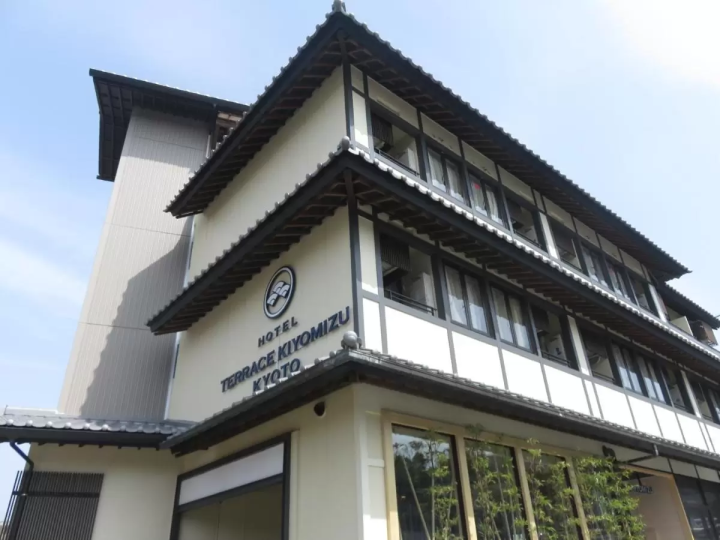
Picture courtesy of Booking.com
Terrace Kiyomizu Kyoto, which offers comparatively reasonable prices, has beautiful views of Kiyomizudera Temple from its rooftop.
Just six minutes on foot from Kiyomizudera Temple, this accommodation facility is ideal for those wanting to make an early morning visit to the temple.
Reserve a room at Terrace Kiyomizu Kyoto on Booking.com
Visit Kyoto's Must-See Attraction Kiyomizudera Temple!
We introduced Kiyomizudera Temple's highlights along with information such as evening illuminations during the cherry blossom and autumn foliage season.
We hope you'll be able to plan your next trip to Kyoto using this article as a reference!
Hotels near Kiyomizudera Temple
Read also
Main image courtesy of Pixta
This is the official account of MATCHA's editorial department. Our articles feature useful travel information for visitors to Japan, from how-to guides to recommended places to visit.







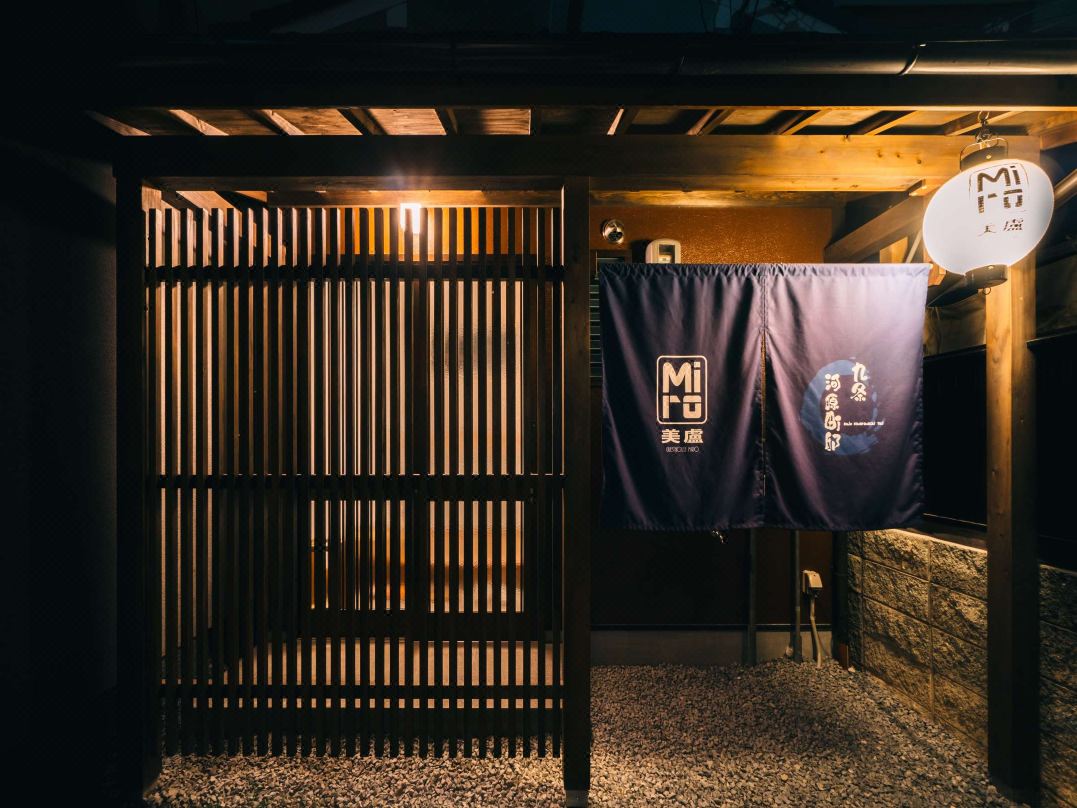

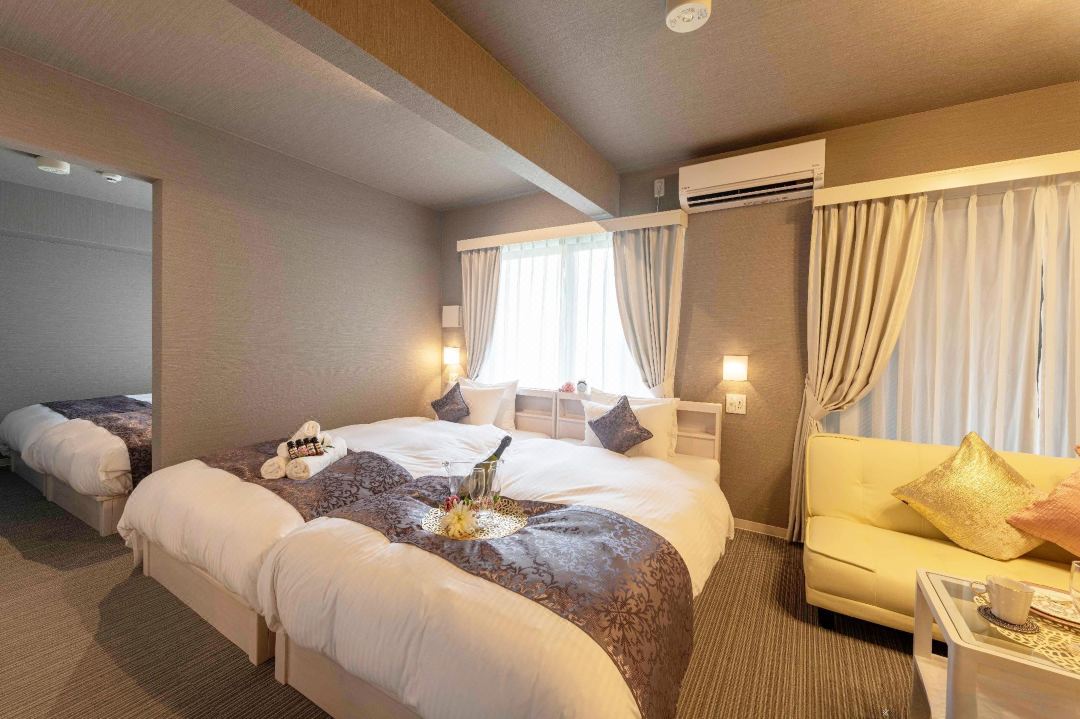
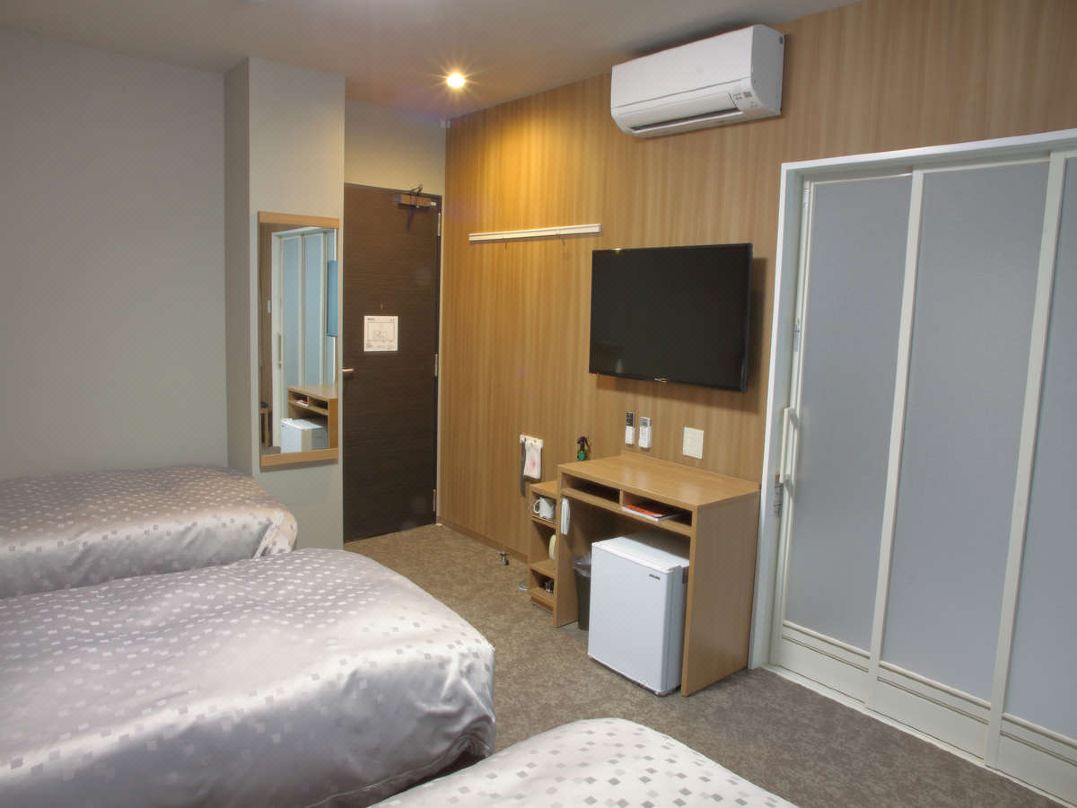








































![[2026] Top 5 Strawberry Picking Spots in Tokushima, Naruto| Farms and Access Guide for January to May](https://resources.matcha-jp.com/resize/720x2000/2025/03/06-227165.webp)
![[Yamanashi/ Hokuto City] 4 Hot New Spots Opening in 2026](https://resources.matcha-jp.com/resize/720x2000/2025/12/12-252747.webp)


